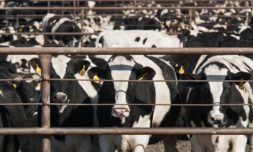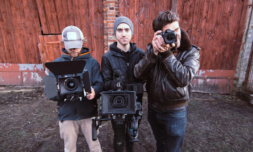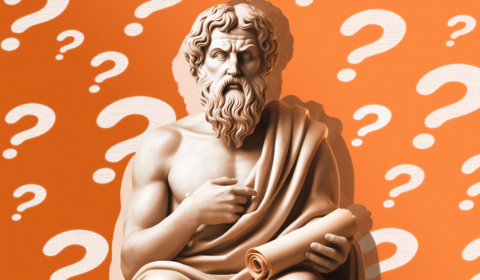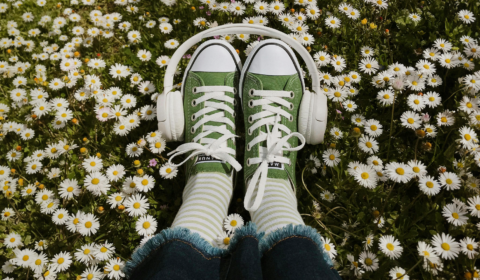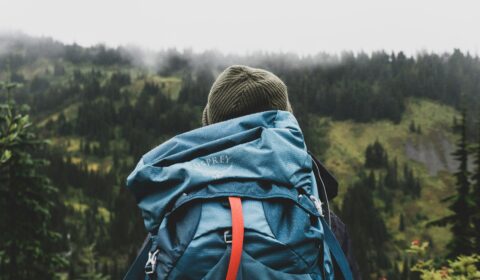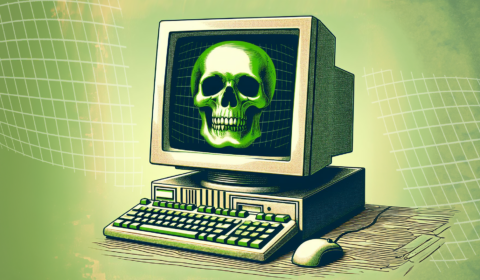This 20,000 square metre installation covers not only a large area, but also some big ideas about sustainable agriculture.
Dutch designer Daan Roosegaarde’s latest installation ‘Grow’ isn’t just a spectacle for the eyes, the mesmerizing combination of colours have a scientific basis as well. The recipe of blue, red, and ultraviolet light helps to trigger the metabolism of the leek plants in these photographs, improving their resistance to pests.
In addition to reducing the need for harmful pesticides, ‘light recipes’ are becoming a big part of indoor farming methods which could provide an answer to the current agricultural crisis, helping farmers to grow food in a more sustainable way.
Hopefully nobody reading this article needs convincing that factory farming is bad. Assumedly, we would all prefer the image of farming that was presented to us in the books we read as children… Chickens and cows roaming free surrounded by bountiful fields of wheat, just as nature intended. However, if that’s the case, then clearly nature didn’t bank on this system needing to fill the mouths of 7 and a half billion humans.
To put it simply, we would need around 10.5 Earths to farm enough land this way in order to sustain the current population. Seeing as we don’t have any spare planets knocking around just yet, we may have to turn to science for the solution.
LED technology is cheap, widespread, and allows for much more varied combinations of light. This is great news for indoor farming, as different species of plants respond better to different wavelengths of light. Therefore utilizing LEDs can help diversify the recipe’s of light we use, and create the optimal growing conditions for indoor crops, improving the yield and output.
If we can grow plants indoors then we can grow plants anywhere, and this means we can stop destroying large portions of ecosystems for farming, and begin rewilding areas that have already felt the harmful effects of humanities insatiable appetite.
Give some more carbon-eating trees a seat at the table, if you know what I mean.
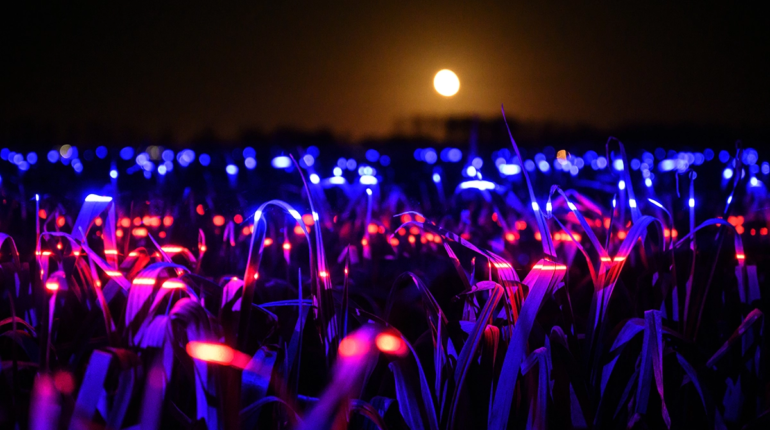

‘Grow’ is a stunning reminder that science and agriculture can work together. This may mean we have to change the pictures of farming in children’s books to look a little less rural, and a bit more sci-fi, but can anyone who’s seen Daan Roosegaarde’s latest masterpiece honestly tell me that it doesn’t look equally as pretty?


Hopefully, just as LED’s have transformed this leek field in the Netherlands into the surface of an alien planet, the message behind the installation will inspire us to take better care of our own.










